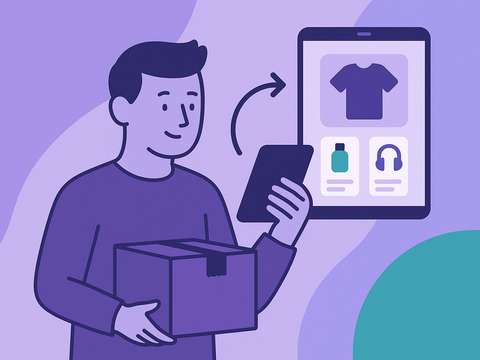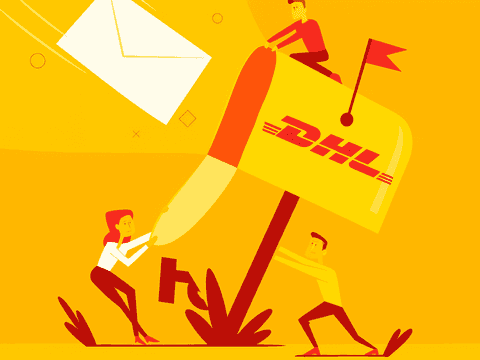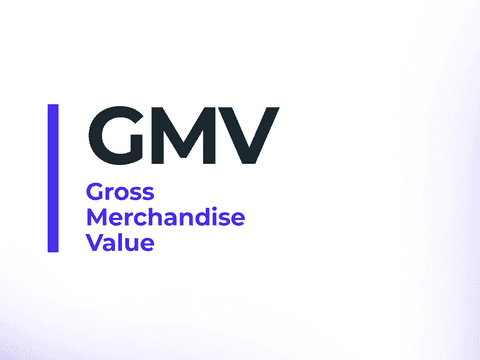Cross-selling and upselling are two of the most effective selling strategies when it comes to maximizing the conversion rate of an eCommerce business.
If you’re in charge of sales, you probably spend a good deal of your time thinking about ways to increase your revenue. Cross-selling and upselling can be great allies in the war of eCommerce since they use customers’ information and purchase intentions to boost sales.
Throughout the following article, you’ll find a wealth of detailed information on cross-selling and upselling, including what they are, examples, best practices and the advantages and disadvantages of selling related products.

What is cross-selling?
Cross-selling is a selling technique that seeks to promote items that complement a product that has already been purchased or will be purchased. The goal behind it is simple: to increase the average order value and boost the number of items a business sells.
Cross-selling is the term for selling related products, whether we’re talking about physical stores — by placing cookies next to the milk or pasta sauce next to spaghetti — or online stores, through digital strategies.
The psychology behind cross-selling is quite simple: Present complementary products together to boost sales.
However, cross-selling opportunities don’t only appear in the first stages of the customer journey. You can also use cross-selling as part of your after-sales service.
For example, you can include banners in the emails sent to inform customers about the status and location of the orders.
What is upselling?
Upselling is a selling technique that is similar to cross-selling. However, when you implement upselling strategies, the goal is to make the customer purchase a more expensive product rather than a complementary one.
The main way to upsell products is by presenting their advantages over similar items.
Upselling, although harder than downselling, can increase many important eCommerce KPIs: the average order value and the revenue per buyer as well as other metrics such as the repurchase rate and the NPS.
Cross-selling vs. upselling
Both cross-selling and upselling share some key similarities. However, despite being related, these selling strategies have quite different goals.
While cross-selling aims to promote additional items to increase the order value — simply by adding more products — upselling techniques try to increase the revenue by selling an item with a greater value.
A cross-selling approach uses data-driven actions to sell related products based on customer segmentation or personalized marketing campaigns. On the other hand, upselling doesn’t necessarily need to be based on previous purchases or ongoing orders. The goal will always be to sell something more expensive.
Examples of cross-selling and upselling
There are many instances when both of these selling strategies can be used, both in the online and offline worlds. These are just a few examples to get you inspired.
Cross-selling examples
In the eCommerce industry, there are also many examples where cross-selling can be used.
ASOS
Looking for sunglasses? “Here you have more.” Creating a cross-selling strategy for your eCommerce store is as easy as that. ASOS decides to show you more sunglasses of the same brand and sunglasses belonging to different brands.
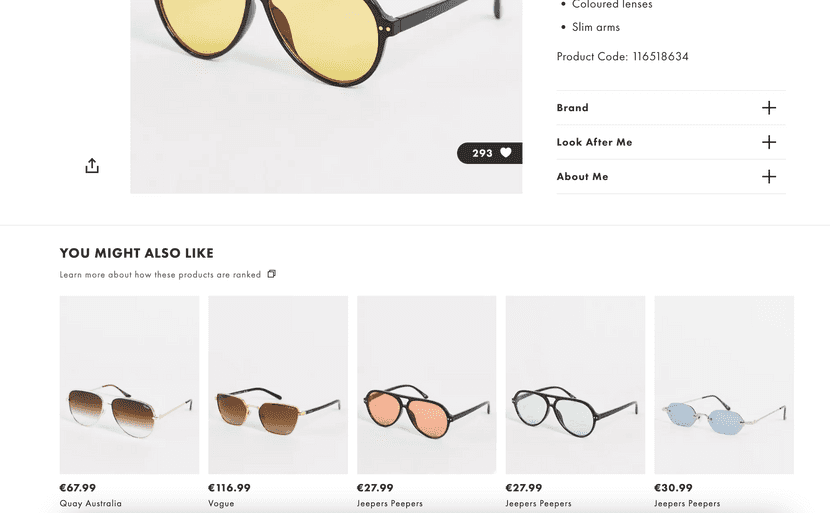
Amazon
Amazon also uses cross-selling practices to promote related products and increase the order value of the buyer. If you need pencils, for example, the chances are you might also want some crayons, a pencil sharpener or an eraser are relatively high.
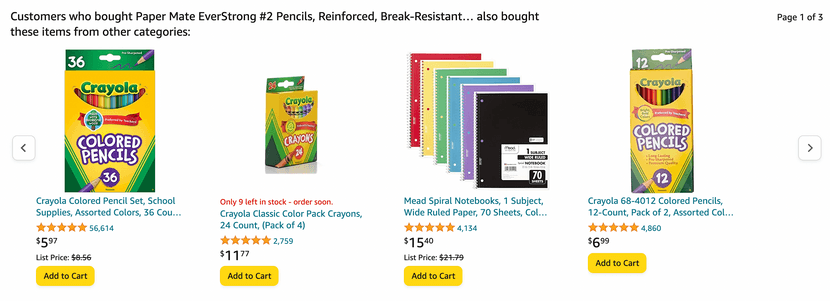
Upselling examples
Upselling, although more challenging, can also be carried out successfully, like in the following examples.
Dollar Shave Club
Dollar Shave Club decided to implement an upselling technique by creating product bundles with frequent combinations, such as shaving cream, blades and a razor. This way, what could have been a purchase of refills for an already-purchased product is transformed into the purchase of a new razor, blades and shaving gel.
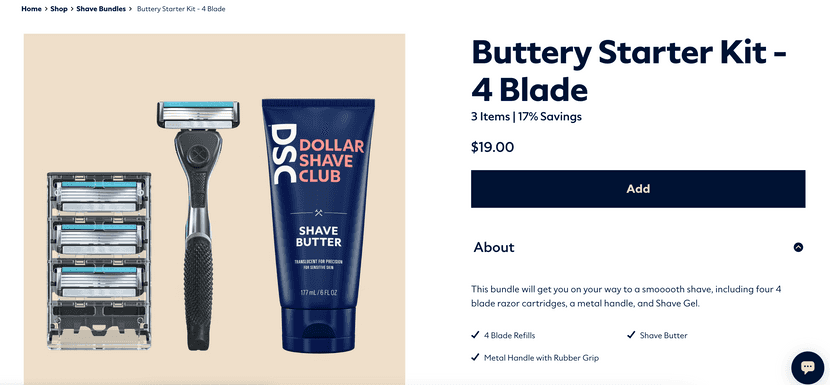
Look Fantastic
Look Fantastic’s take on upselling is a bit different. Apart from creating product bundles with related products or cosmetics from the same brand, they offer a subscription service that will increase the revenue per customer drastically.
Customer loyalty will also be increased in this upselling example since buyers that might have visited and purchased from the online store every once in a while have quickly become repeat customers for 3, 6 or 12 months.
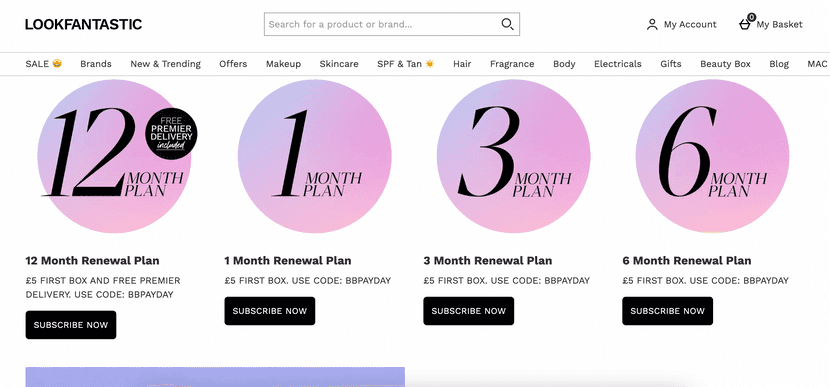
Cross-selling best practices
Here are some of the ways in which you can start cross-selling products in your online store:
- Create product bundles to make “one product” more valuable than the purchase of the initial item the buyer was looking for.
- Make data-driven suggestions to match services with the goals of the customer. Simply offering products available in the store will not suffice. You need to offer buyers items that have some relation to what they ordered and that will be of interest to them.
- Pitch promotions. Another way to sell related products is by emphasizing those items that are on offer. This is probably the most common approach to cross-selling, but it’s proven to be successful for most online stores.
- Add banners and related products to emails. Once you have your customers’ contact information, you’ll be able to send personalized offers with products related to their previous purchases or website visits. Use the data you collected and the high open rate of emails to improve your chances of conversion.
- Use cross-selling on the product page. You can promote products that go well with the item the potential buyer is visiting under that same product page.
- Promote related products at the checkout. Just before the buyer pays and completes their order is the perfect moment to suggest a related product and increase the value of the order.
- Take full advantage of promotional newsletters. When it comes to communicating with your customers or potential customers through personalized emails, sending promotional newsletters is key. These can be created and sent depending on different factors: segmentation of the customer, season, ongoing offers that could be of general interest, etc.
- Put your blog and other eCommerce content marketing ideas into service. You can use the blog as an opportunity to talk about your products as a solution to a problem. This approach is cost-effective and perceived as less intrusive than other methods, such as personalized emails, banners or SMS.
- Cross-sell with your tracking portal. Use the full potential of your tracking portal to make every query an opportunity for new purchases.
By connecting your CMS to Outvio, you’ll be able to create your own customized tracking portal and send personalized emails with cross-selling and upselling techniques.
Upselling techniques
Some of the best practices for cross-selling can also be used as upselling techniques. However, upselling tends to be more complicated, and you may need more advanced strategies to upsell products. These are just a few ideas of how to go about it:
- Display your higher-end products first. If your goal is to upsell, it’s important to highlight these items and promote them as much as possible. To do so, place more costly products in the suggestions.
- Suggest productswith a similar price point. Although in principle this point could seem to contradict the last one, showing products with a similar price point together will help the customer perceive them as a better deal.
- Highlight the added benefits of the advanced version of whatever the customer is looking for. If they’re looking for a phone, for example, show the advantages of the next model and you’ll be indirectly carrying out an upselling technique in the process.
Cross-selling benefits
According to FunnelStrategist statistics, cross-selling can increase the profits of an online store by 30%.
First of all, cross-selling brings benefits in terms of sales, but it also lowers the acquisition cost. And, at the end of the day, it’s more profitable to promote repeat sales than it is to attract new customers and make sure they convert.
Additionally, well-executed cross-selling strategies can strengthen brand image and help to build customer loyalty and retention. In many cases, you’ll be covering customer needs without them actually requesting it.
The success behind cross-selling is easy to pinpoint: It’s less intrusive than promoting products through traditional advertising techniques.
But why is cross-selling especially beneficial for online stores? It’s because the customer is only one click away from another product, and this encourages impulse purchases.
Benefits of upselling
Upselling, as a selling technique, can be very beneficial in terms of revenue and increasing the AOV of your eCommerce business.
However, it can affect other elements of your organization, such as the reputation of the online store, its place on the market or the type of audience you want to attract.
For instance, when you carry out downselling strategies, you’re indirectly saying that your target audience is price sensitive and has a better attitude towards products of less value. On the other hand, if you present your products as being high-end and you don’t make price your competitive advantage, then you’ll be gaining customers that pay more attention to other factors, such as design or quality.
These characteristics will make your online store unique and provide you with more chances to gain satisfied customers in the long run.
Drawbacks of cross-selling and upselling
As with many business strategies, there’s a negative side to implementing cross-selling and upselling that we need to consider.
Although the benefits of the strategies outweigh the disadvantages, constantly creating cross-selling and upselling campaigns can bring your business some not-so-good results.
For instance, they may increase the resources needed in customer support (and therefore, costs).
The number of returns could also increase, due to unsatisfied customers or buyers that realized they didn’t need an item in the first place. On the branding side, it could attract the wrong customer, such as one who’s driven by impulse purchases and discounts (and who might end up causing you more headaches than benefits).
Cross-selling and upselling strategies could be seen as an intrusive way to promote products, especially when the communications are over-personalized to the customer. The marketing campaign created to boost sales and increase customer loyalty, can, in the end, have the opposite effect and make you lose customers.
However, when done correctly, the benefits are immense, with over 70% of success according to statistics. To implement these strategies at a lower cost and to achieve the maximum benefits, it’s recommended to use tools that allow you to automate the creation and implementation of cross-selling and upselling.
Outvio allows you to include banners and cross-sell and upsell products during the post-sale stage thanks to customized emails and your own tracking portal.
Conclusions
Growing revenue and building a solid customer audience is extremely important for the survival and success of online stores.
One essential method to achieve these goals is to implement cross-selling and upselling strategies.
Use these best practices and techniques to grow your eCommerce business today, and automate the process as much as possible with innovative tools like Outvio.


